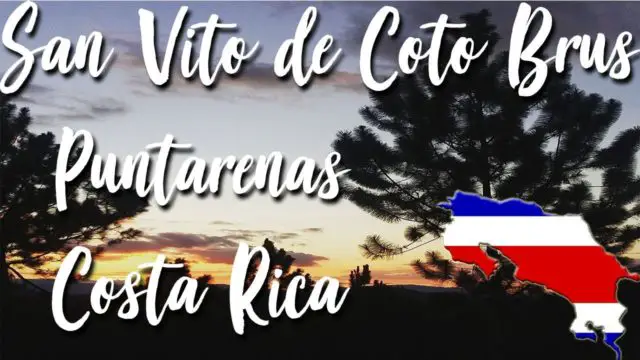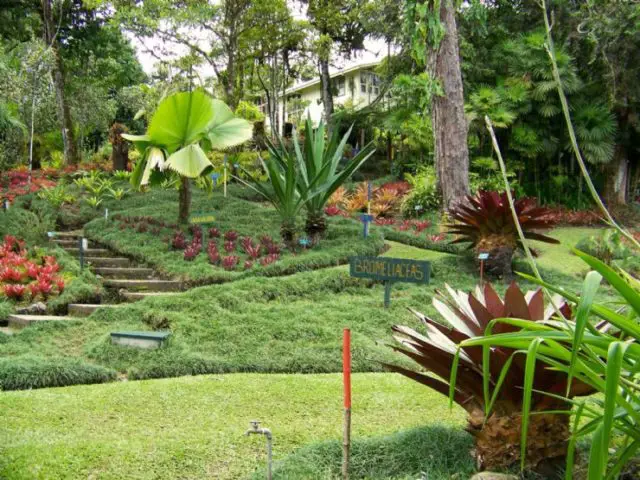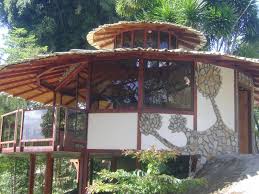The canton of Coto Brus is located in Puntarenas Sur, and borders Panama, to the east and the canton of Buenos Aires in the north. Surrounded by lush forests and spectacular mountain ranges, San Vito is an ideal place for travelers hoping to explore the rainforests of Costa Rica.

San Vito, originally called San Vito de Java, forms the main city of the canton of Coto Brus, in the province of Puntarenas of Costa Rica, near the border with Panama. It is located at a distance of about 271 km southeast of San José, capital of the Republic and 33 km north of Ciudad Neily.
The city is based on a plateau of very irregular topography, at an altitude of 1,009 meters above sea level and in the foothills of the Talamanca mountain range. The Java River, narrow and torrential, runs from northwest to southeast on the outskirts of the town.
San Vito has an existence of just over 60 years and has become an important center of the Brunca Region of the country.
The district measures 142.37 km² and has an estimated population of 14,839 inhabitants (2011) .1 of these, around 5,000 reside in the main city.
History.
San Vito de Java responded to a planned foreign agricultural colonization process, in which the Costa Rican state organized a process of creating agricultural colonies. Its purpose was twofold: in the first place it was sought to populate the country with immigrants (in this case mostly Italians) and secondly, it was intended to settle this population in peripheral sites of the country. In the case of San Vito, it was founded thanks to the colonization of people from Europe, specifically Italy.
In 1952 (during the post-war socio-economic crisis in Europe) a group of Italian pioneers from forty different places, from Trieste to Taranto, with a handful of Istria and Dalmatia, was strongly led by the brothers Vito Giulio Cesar and Ugo Sansonetti.
This Italian immigration is a typical example of directed agricultural colonization, which resembles in many respects what happened in other parts of Latin America. European immigrants came with the help of the Intergovernmental Committee for European Migration (CIME).
Vito Sansoneti (1916-1999 †) sailor by profession, was the founder of the colonizing company he called the Italian Society of Agricultural Colonization (SICA) and was in charge of negotiations with the Costa Rican authorities, represented by the Land Institute and Colonization (ITCO). His brother, the lawyer, Ugo Sansonetti, lived in San Vito, serving as leader and agent of the company in the region.
The sector until then was known only as Coto Brus, the toponymy of indigenous origin. At that time, the country was very interested in expanding new agricultural frontiers to develop and diversify the economy, as well as to encourage foreign investment with soft bank loans and land transfers.
The SICA had an initial capital of $ 800,000 that was subsequently delivered through the sale of shares and different loans of Italian, Costa Rican, and North American origin. The government of Costa Rica, on the initiative of SICA, offered 10,000 hectares of land, and in 1951 the contract was signed. SICA, on this occasion, promised to install 250 families of which 20% would be Costa Ricans. The period from 1952 to 1964 was characterized by the settlement and consolidation of the colony. Each family of settlers received an area of 20 hectares for agricultural exploitation.
The settlers had to face a lot of problems, mainly due to the marked geographical isolation of the region. However, from 1964 onwards coffee production caused the landscape to begin to change favorably. The contract signed in 1951 between the government of Costa Rica and SICA was an engine that stimulated the arrival of Italian settlers, as well as Costa Ricans from various regions of the country attracted by the economic possibilities offered by the area.

In the 1960s-69s, the colonization program showed its fruits. The inhabitants of the colony had adequate housing, coffee plantations had reached a good level of production, and there were other crops, mainly subsistence products. They also had an urban center that provided public services and social care.
Properly in San Vito, the initial focus of colonization, the population went from 45 inhabitants in 1952 to 10710 in 1982, which translates into an annual growth rate of 710%, while for the Coto Brus canton it was 91% for those same years, passing the number of inhabitants from 1,000 to 28,346.
SICA (in the area of 10,000 hectares) began the construction of a series of buildings such as the hospital, the school, the sawmill, industries, shops, among others, while the Costa Rican government undertook to build a road between San Vito and Golfito.
The agricultural project was a great success, and today the ancient forest of the San Vito de Jaba area was settled with the integration between the former Italian pioneers and the natives of Costa Rica.
Place names

Contrary to a popular belief, the origin of the name is not attributed to Vito Sansonetti, one of the first landowners in the area, but it was in honor of the Italian saint founder of Vito de Lucania villages, coincidentally of his same name.
The term “Java”, according to legend, is because migrants once found a Panamanian Indian in the creek that passes through San Vito with a “jaba” (packaging consisting of a wooden crate) on the back. The same river would later adopt that name, to date.
No other population in the country has been so influenced by the contribution of Italian culture, although over the years, it was widely modified by the contribution of other ethnic groups: Creoles, Guaymí Indians, Asians, etc.


